There was a report recently about a bicyclist crashing into the entrance bollard at the Fremont Avenue bridge over Stevens Creek. The cyclist suffered a terrible injury: a complex fracture which required five screws in the bones of her hand. Reports of bicycle injuries due to bollards and narrow gates are not uncommon.
Barriers can be contrary to the CalTrans Manual…but it’s not the law
Examples of barriers which are obstacles for cyclists are found all over the South Bay at entrances to trails and bridges. These barriers can be hazards that are contrary to the standard found in the Caltrans Highway Design Manual (HDM). That manual says that obstacle posts or gates must not be used to force bicyclists to slow down, stop, or dismount.
Transportation engineers, however, often point to the Introduction of the HDM which says, “Engineering judgment must be used to apply the HDM to designs and to adjust designs to fit individual site conditions.” This statement gives transportation staff wide latitude to interpret the HDM standards. It also makes sense when thoughtfully applied, as real world conditions rarely match ideal ones perfectly–and great projects could be lost due to small discrepancies with the HDM.
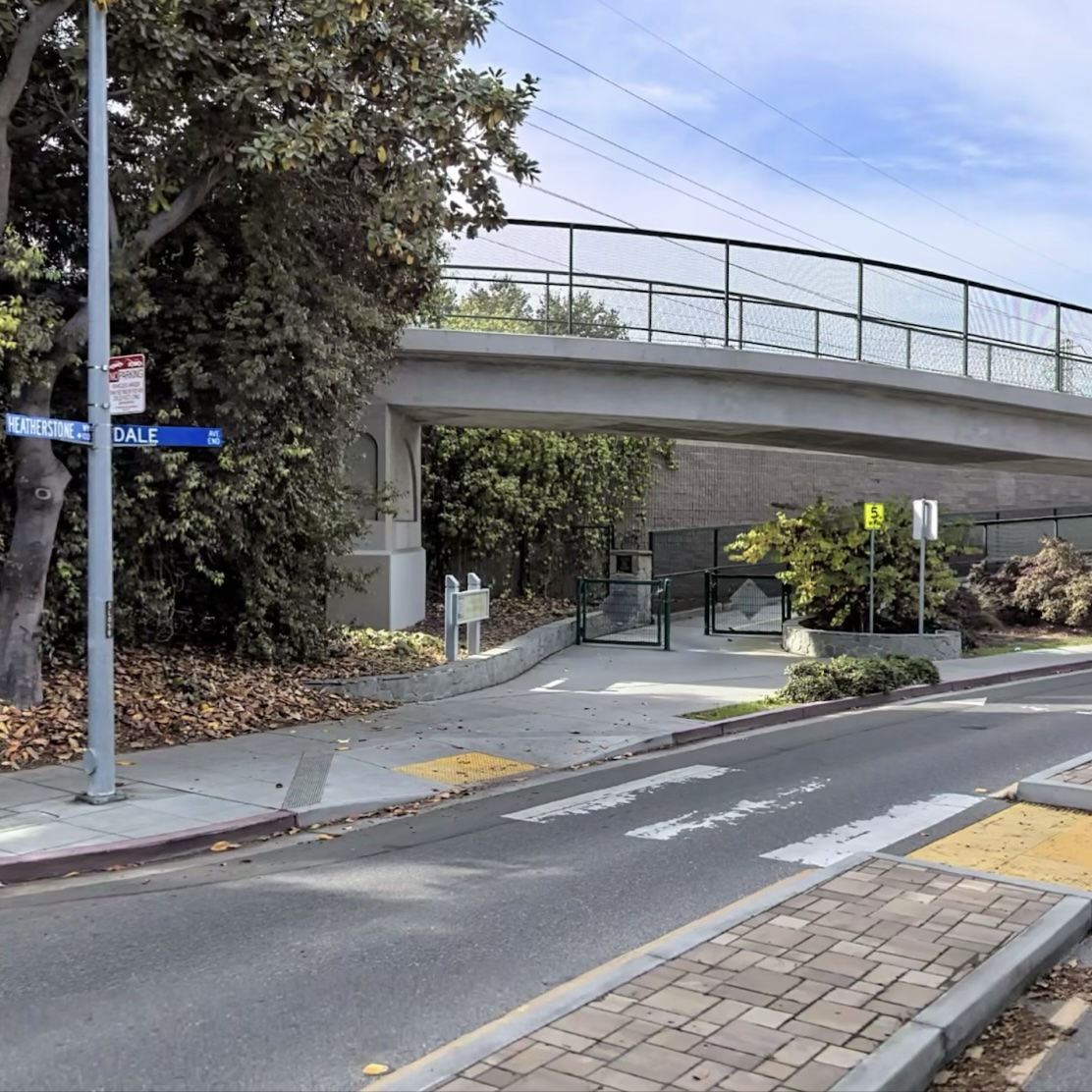
Barriers at the entrance to the SC Trail on Heatherstone.
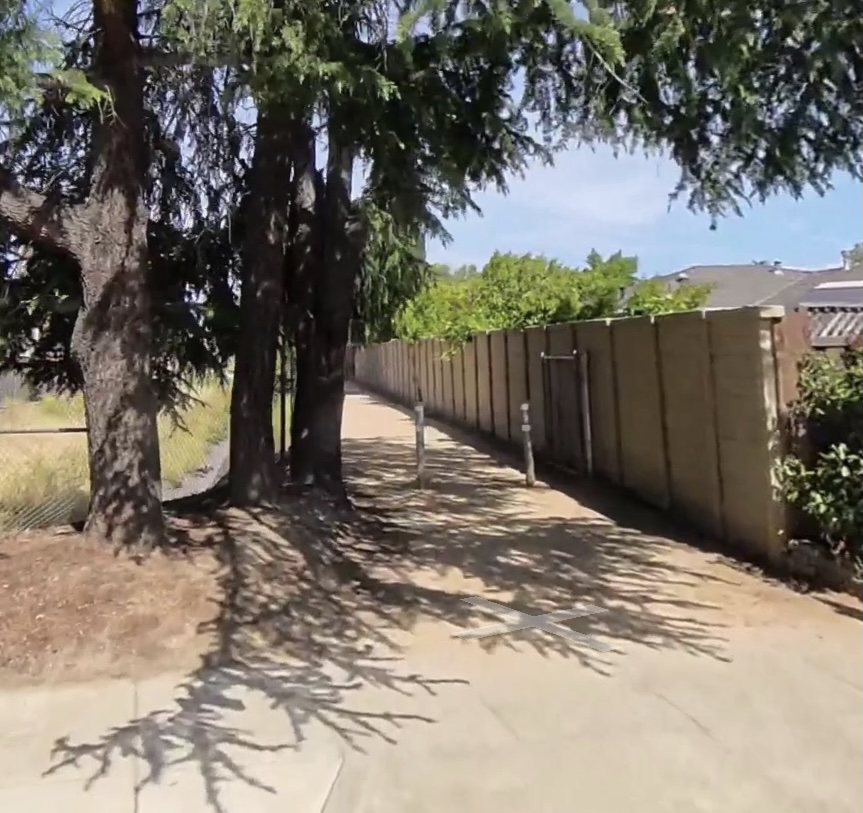
Bollards at the entrance to the RCT on Blaney Ave.
Fewer in Cupertino, but still present
There are fewer of these barriers in Cupertino than other local cities, perhaps because there are also fewer trails and pedestrian/bike bridges which intersect streets. Per city staff, the ones that are there often have other reasons for their placement than slowing cyclists. According to Transportation Manager David Stillman, “[On the] Regnart Creek Trail, Valley Water requires the posts because the trail is their property and they must limit public vehicle access to their creek maintenance road.” He further states that, “On the approach to the Don Burnett bridge, we have actually had problems with people trying to drive vehicles across the bridge, so the posts are necessary.”
Some are used deliberately as obstructions in Cupertino
There are locations, however, in Cupertino where there are barriers specifically placed as an obstruction to cyclists. One of these is the offset fencing at the exit of the Stevens Creek Trail onto Stevens Creek Blvd. The purpose of this is to prevent bikes riding at speed directly onto the 35mph road. Stillman is clear that the motivation is safety for cyclists. “I’d argue preventing bikes from speeding onto the street is a greater safety consideration than bicyclists hitting the railing.”
Some are also placed in locations that don’t seem to be either possibly helpful to protect cyclists, or may actually decrease safety from cars. One example where there is a bollard that doesn’t seem to have a specific purpose is at the entrance to the bridge from Sterling-Barhart Park to the Saratoga Creek Trail. It is more than 200 feet from the quiet residential street of Sterling, and it’s clear from path width, signs and more that it’s not a car travel path. Yet there is a bollard there only 42″ from the adjacent walls. Close by, there is a bollard at the entrance to the Saratoga Trail at the crossing of Lawrence Expressway. This bollard is a safety issue for cyclists, as it impedes getting off Lawrence when crossing at the crosswalk. As this exit is a “T”, there can be no safety argument for slowing a cyclist that may try to enter Lawrence, as they already must slow down for the turn.
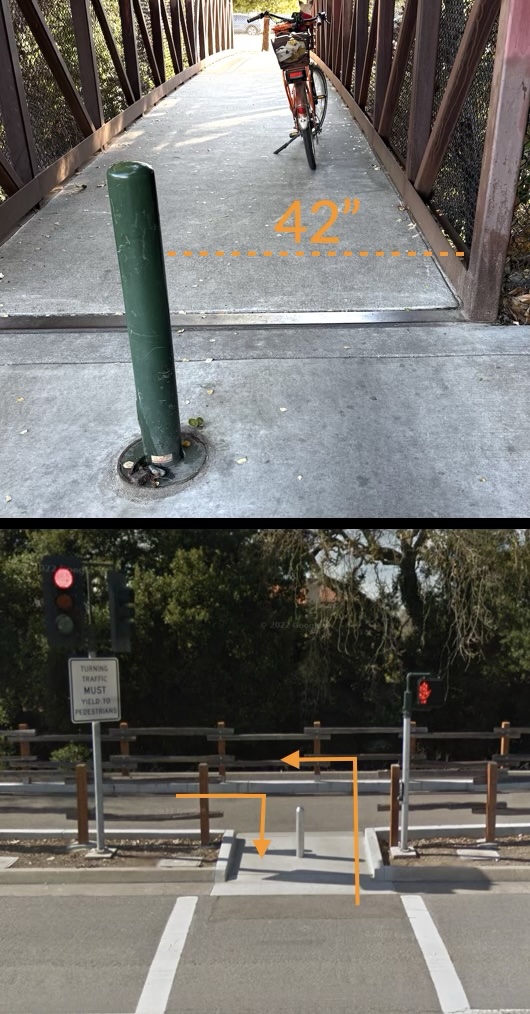
Bollards at Sterling-Barnhart Park, and at Lawrence Expressway crossing.
Modifications can be made
We have seen in Cupertino that the barriers can be modified. On the Don Burnett Bridge, for example, after incidents with cars trying to drive onto the bridge, two bollards were placed on the path leaving three equivalent gaps for cyclists to ride through. This was found to cause confusion and injuries for cyclists, so the Bicycle Pedestrian Commission made a recommendation for a single center post. One post wasn’t quite wide enough to stop a car, so staff instead placed two posts side by side. This placement works to solve the issue, while not causing undue problems for cyclists.

Bollards on the Don Burnett Bridge before (L) and after (R).
More issues outside of Cupertino
Outside of Cupertino, placement of barriers don’t seem to be as thoughtfully considered. One example is the barriers at the entrance bridge to the Stevens Creek Trail on Heatherstone in Sunnyvale. (See picture at the top of this article.) They are very difficult to navigate on a bike without dismounting. These offset gates clearly are not there to prevent a car going on the trail: it’s impossible to drive up the narrow pedestrian/bike ramp, and the ramp location on the other side of a sidewalk (and going the wrong way) make it obvious the ramp is not for cars. “Safety for cyclists” would also be a suspect reason, as the adjacent road is a quiet residential street and cyclists cannot enter it without turning left down a pedestrian ramp. Leaving these gates wide open instead of two offset gates would improve access for cyclists, and should be considered.
Access for everyone
One major issue with barriers is they can make access difficult to tricycles ridden by seniors or residents with mobility issues, some cargo bikes, and cyclists with child trailers. Bollards need to be at least 5 feet apart to allow clearance for all typical active transportation. Most bollards in Cupertino are this far apart, but there are some places with older ones that don’t leave enough room. The bollard at the exit of the Saratoga Creek Trail at Bollinger and Lawrence Expressway is one example of too-narrow clearance, as it is only 38″ from the bollard to the wall. This is very problematic as there are no close alternate low-stress streets to use to continue south on the trail. Bollinger is a 35 mph road with significant speeding and known safety issues with recent pedestrian deaths. Lawrence Expressway is even faster at 50 mph and more dangerous.
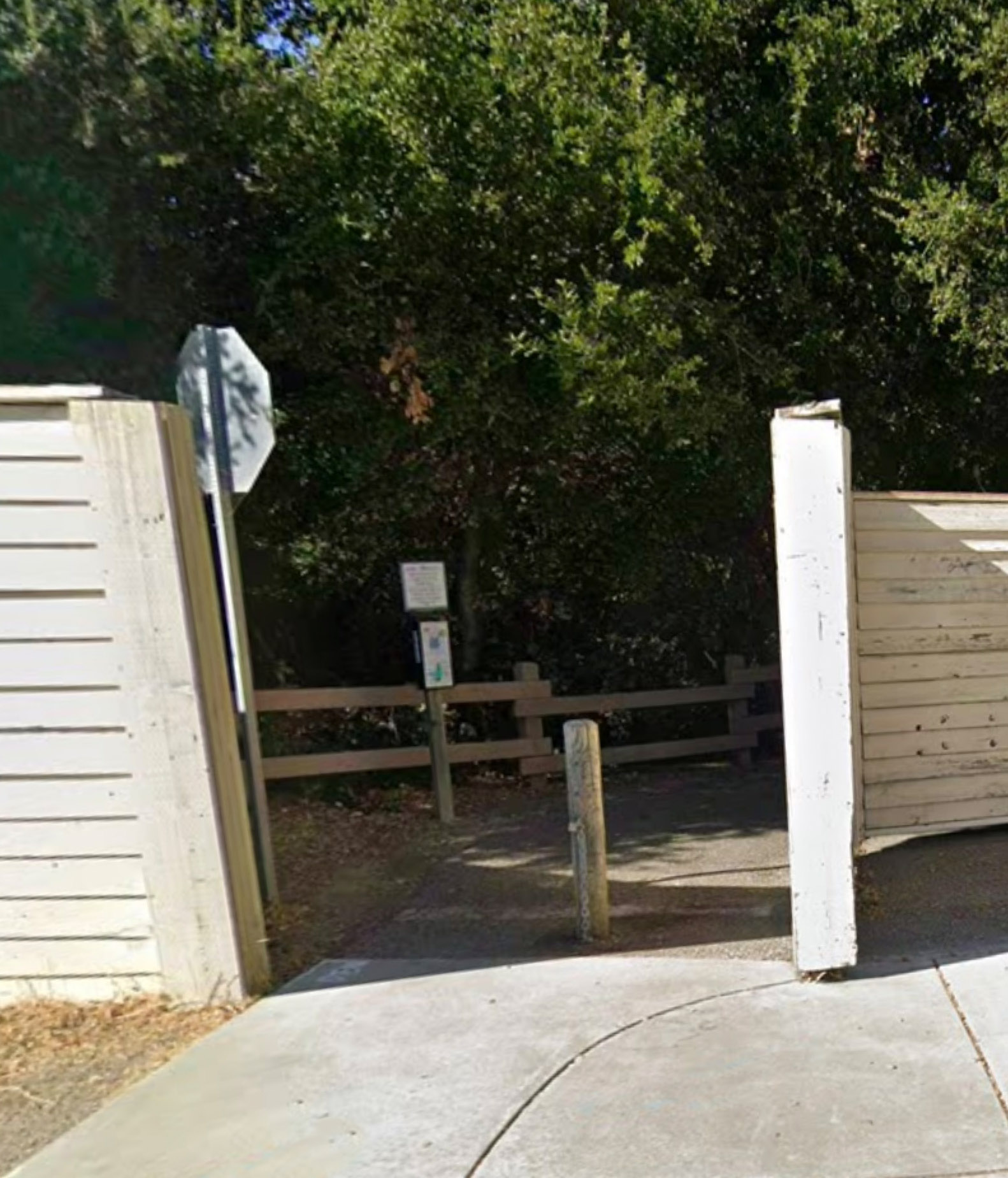
There is limited bollard clearance for bikes at the exit of the Saratoga Creek Trail.
In general, Cupertino follows the HDM guidance to not add obstacle posts or gates, but Stillman says, “I wouldn’t hesitate to install some type of barrier or restriction, as a bicycle-vehicle interaction would generally be more severe than a bicycle collision with the barrier, and which likely could be avoided by the cyclist.” As shown in an overwhelming number of studies, the greatest danger for cyclists are motor vehicles and not fixed items. We are pleased that the Cupertino city transportation staff are thoughtfully considering where and how to place these barriers for the maximum benefit of all residents, but hope that a review of bollards that are unnecessary or poorly placed can be done soon.
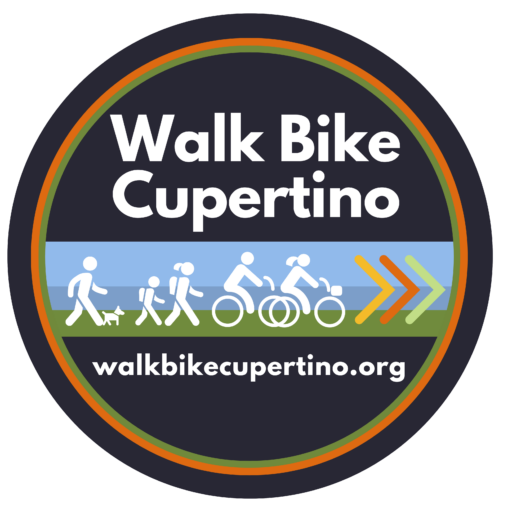
I find all bollards and entry barriers in general to be an obstruction that are hazardous to my health as a cyclist. They should not be there according to the HDM.
I am disabled, so I ride a trike. Some bollards prevent me from using the path entirely. The Fremont Ave. bridge over Stevens Creek is a good example. I can’t get past the bollard, so I have to leave the bikeway and merge into traffic. I suppose that bollard is there to prevent car intrusion, but in practice, it probably has no value in that respect. Any driver willing to jump the curb will probably just run right through the post.